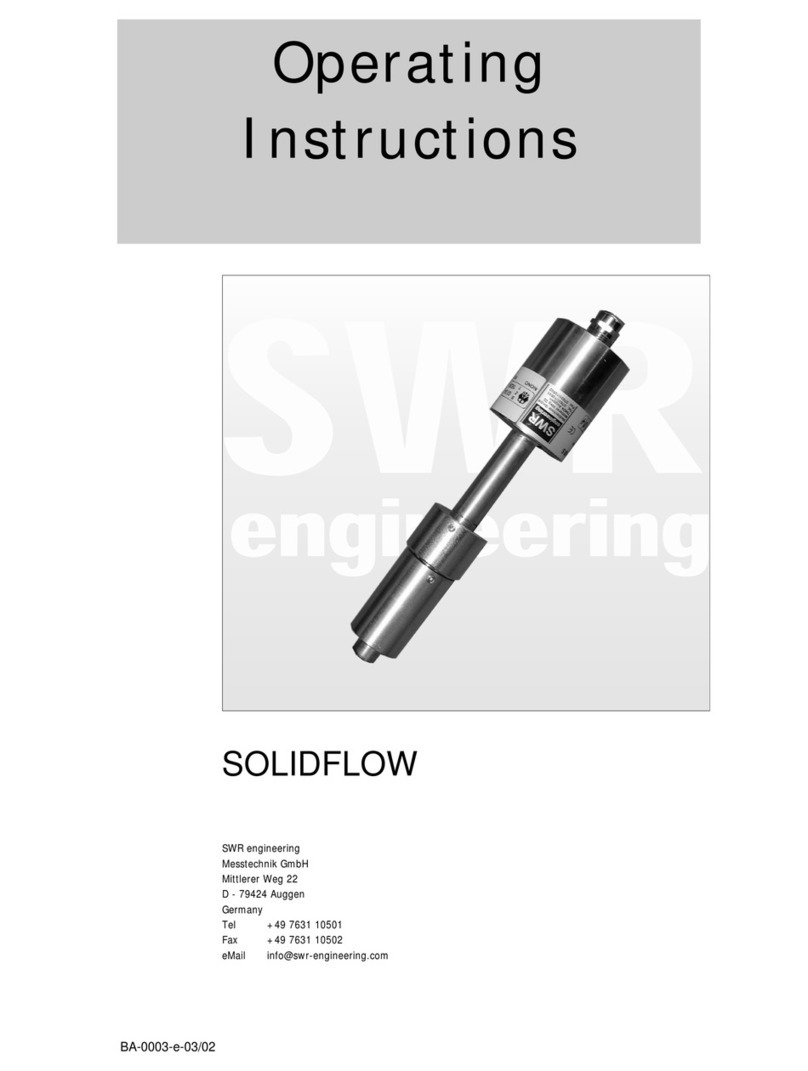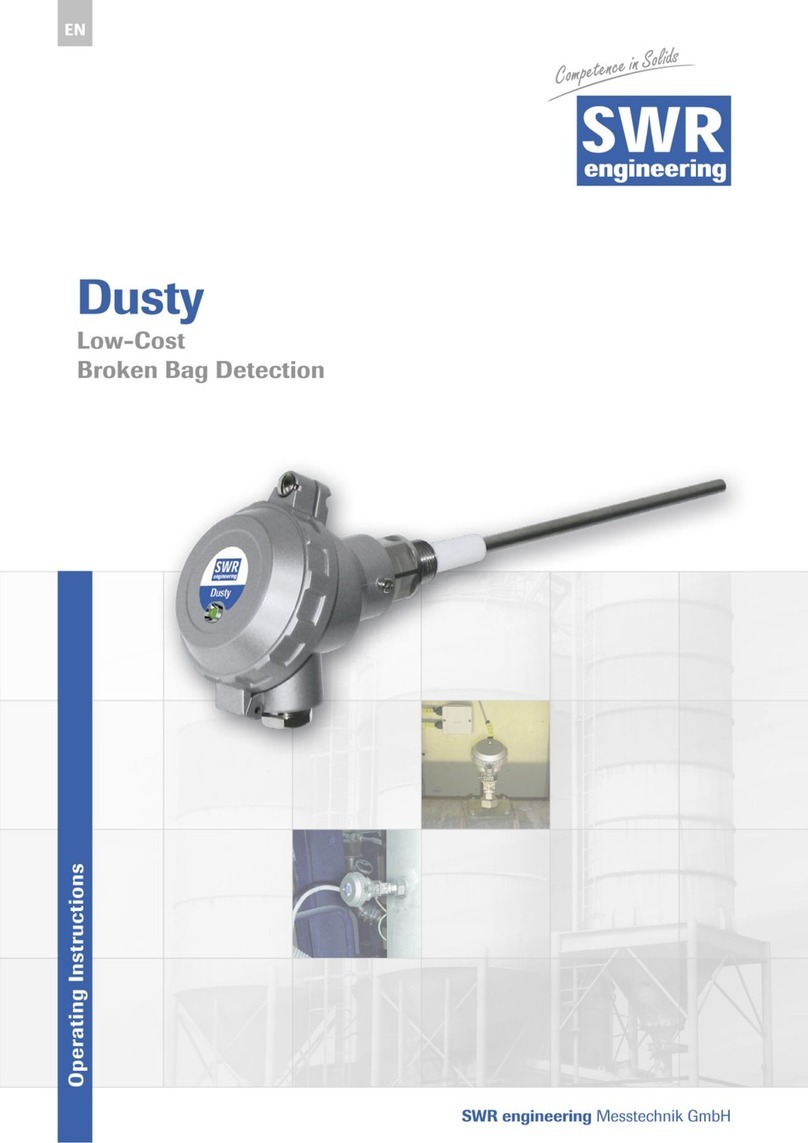
8
Adjustment of sensitivity
Hereto use switch S2, potentiometer P1 and potentiometer P2.
The control elements are in the following positions at the delivery (this basis is crucial for the
commissioning):
•P1 (fine adjustment of sensitivity): at the left lay, thus insensitive
•S2 (coarse adjustment of sensitivity): switch at (on), thus relatively insensitive
•P2 (delay time): at the left lay, thus minimal delay of 250 ms
Now start your machine in order to guarantee material flow. In consequence the LED 1 must light-up. If the
LED 1 doesn’t light-up, then the switch S2 has to be set on (off).
Now choose the position of the switch S1 accordingly, if the relay has to be turned (on) or (off) at material
flow.
Enhance the sensitivity so long until the LED 2 glows and the relay switches (off) or (on).
If you interrupt the material flow, both LED lightning must go out, whereas the LED 2 goes out at the latest
if the delay time ends.
Finally, you can adjust the delay time according to your requirements with potentiometer P2 in the range of
250 ms ... 15 s.
6. Troubleshooting
If LED 1 does not light up even at the largest possible amplification, the following points must be checked:
•properties of the material flow (see e. g. fig. 7)
•positioning of the installation
•distance between the sensor and the material flow
If LED 1 lights up without an existing material flow and with minimal amplification adjusted on S2 and P1,
it is very likely that the sensor detects the motion of something else or vibrations.
Attention: Does the LED 1 lights up continuously, then either there is no connection between sensor and
DIN Rail electronic, or the sensor is broken!
7. Notice
•Avoidance of reflection by vibration or moving line parts
•Setting of the amplification by potentiometer P1 until just of the switching threshold (LED 2 glows)






























